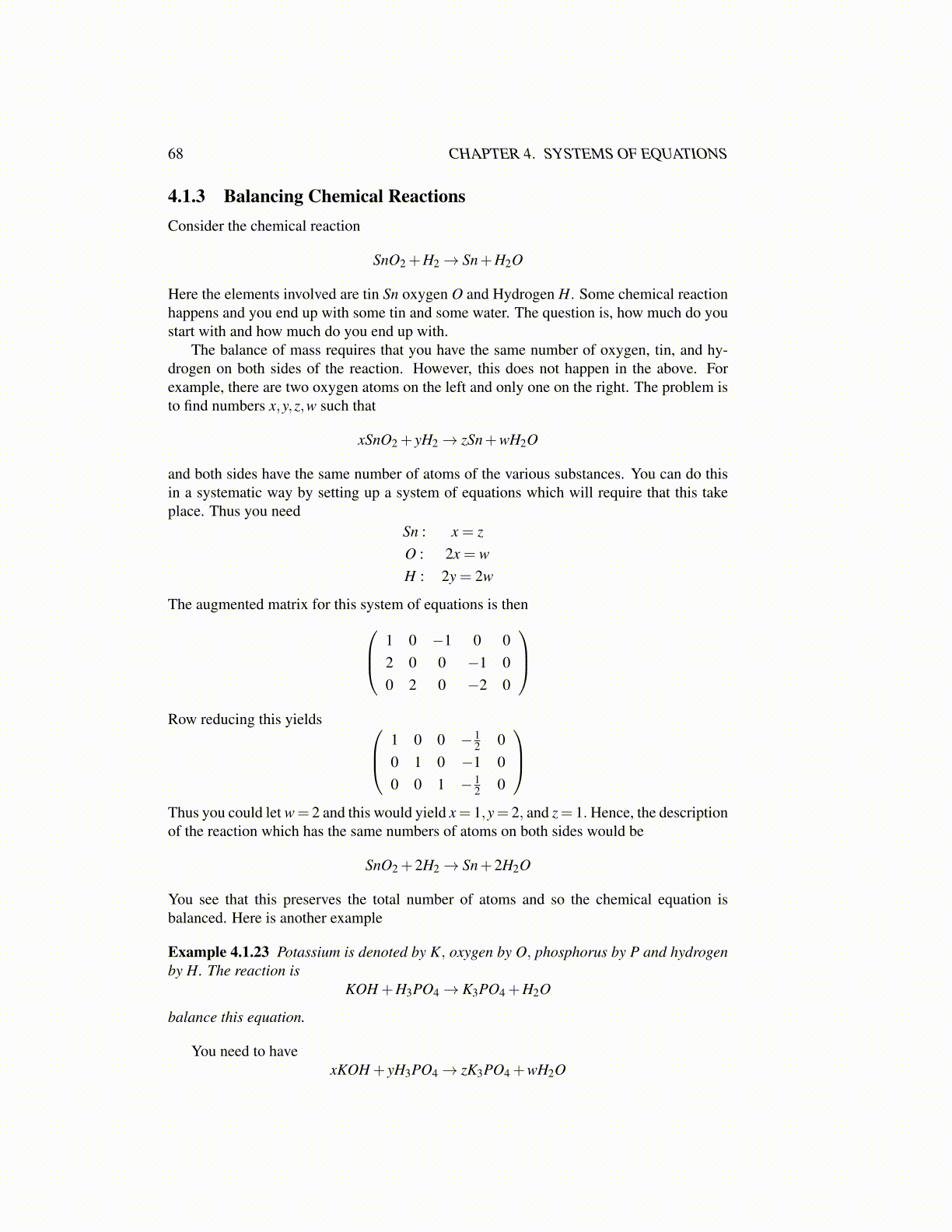
68 CHAPTER 4. SYSTEMS OF EQUATIONS
4.1.3 Balancing Chemical ReactionsConsider the chemical reaction
SnO2 +H2→ Sn+H2O
Here the elements involved are tin Sn oxygen O and Hydrogen H. Some chemical reactionhappens and you end up with some tin and some water. The question is, how much do youstart with and how much do you end up with.
The balance of mass requires that you have the same number of oxygen, tin, and hy-drogen on both sides of the reaction. However, this does not happen in the above. Forexample, there are two oxygen atoms on the left and only one on the right. The problem isto find numbers x,y,z,w such that
xSnO2 + yH2→ zSn+wH2O
and both sides have the same number of atoms of the various substances. You can do thisin a systematic way by setting up a system of equations which will require that this takeplace. Thus you need
Sn : x = zO : 2x = wH : 2y = 2w
The augmented matrix for this system of equations is then 1 0 −1 0 02 0 0 −1 00 2 0 −2 0
Row reducing this yields 1 0 0 − 1
2 00 1 0 −1 00 0 1 − 1
2 0
Thus you could let w= 2 and this would yield x= 1,y= 2, and z= 1. Hence, the descriptionof the reaction which has the same numbers of atoms on both sides would be
SnO2 +2H2→ Sn+2H2O
You see that this preserves the total number of atoms and so the chemical equation isbalanced. Here is another example
Example 4.1.23 Potassium is denoted by K, oxygen by O, phosphorus by P and hydrogenby H. The reaction is
KOH +H3PO4→ K3PO4 +H2O
balance this equation.
You need to havexKOH + yH3PO4→ zK3PO4 +wH2O